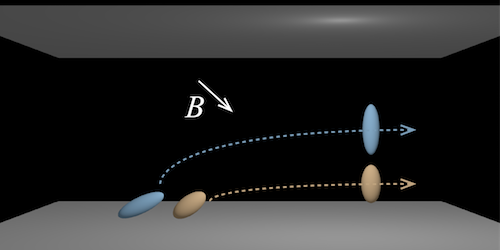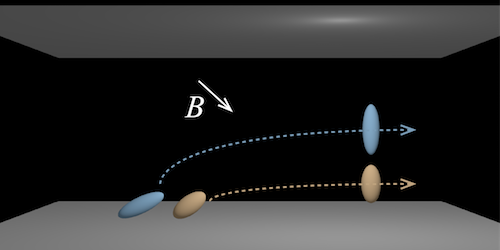Magnetic Wand Directs Particles in Microfluidic Device
The ability to control the positions of particles in a flowing liquid could benefit “lab-on-a-chip” schemes—microfluidic devices that carry out functions traditionally run in conventional laboratories, from DNA sequencing to the synthesis of chemicals. Most existing particle-positioning schemes, however, work optimally with liquids flowing at high Reynolds numbers, a regime in which the flow is fast. Julia Yeomans and co-workers at the University of Oxford, UK, have now theorized a scheme that could work at low Reynolds numbers, that is, under the conditions of slow laminar flow most typical of microfluidic devices.
The researchers’ idea is to use a static, uniform magnetic field to control ellipsoidal magnetic particles that are suspended in a fluid flowing through a narrow channel. Because the particles are asymmetric, the magnetic field orients them in the moving fluid, operating like a sailor who directs a ship’s sails in the blowing wind. According to the team’s calculations, the angle of the particles determines the hydrodynamic interactions between the particles and the channel walls. By adjusting this angle, the field can be made to push the particles toward or away from the walls in a fashion that depends on the particles’ geometry. Studying 1000 particles moving in a 10- m-wide channel of water, the researchers show theoretically that a simple rotation of the field can control the particles in multiple ways. It can, for instance, sort the particles by size or shape by directing them to different points at the channel’s output, or it can focus a stream of particles at desired points along the channel.
This research is published in Physical Review Letters.
–Matteo Rini
Matteo Rini is the Deputy Editor of Physics.





